In the year 2000, Bill Clinton introduced a preview of the Human Genome Project and promised rapid progress for the diagnosis and treatment of illnesses such as cancer, diabetes, and Alzheimer’s disease. One of the goals of the project is to find information on genetic predispositions to diseases within an individual’s DNA, in order to take early preventive actions or implement individually tailored therapies. However, the more we learn about the matter, the more questions arise. The protein decoded in DNA sequence provides little information about how individual characteristics are actually established; many functions within the DNA sequence remain a mystery. Nevertheless, faster and cheaper sequencing processes in the coming years will make simultaneous comparison of complete genomes possible. Some internet services even allow people to upload their genetic codes to make it available for research. It is an exciting time to be working in the field of genetic research.
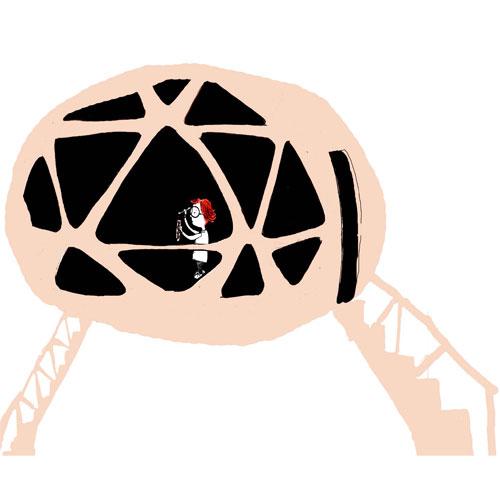
Genetic Engineering - DNA visitor’s lab
Jonathan Hadari
Genetic Engineering - DNA visitor’s lab
Jonathan Hadari
Drawn by Jonathan Hadari , 2014.
 This work is licensed under a Creative Commons Attribution-NonCommercial-NoDerivatives 4.0 International License.
This work is licensed under a Creative Commons Attribution-NonCommercial-NoDerivatives 4.0 International License.
My Future?: Genetic Engineering
Text and images by Jonathan Hadari
University of the Arts (UdK), Berlin
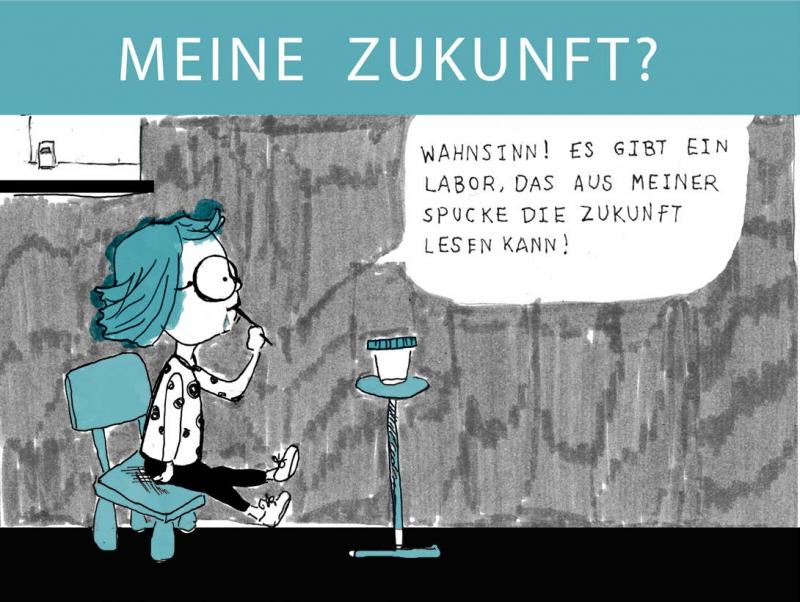
My Future?
“Awesome! There’s a laboratory that can read the future from my spit!”
My Future?
“Awesome! There’s a laboratory that can read the future from my spit!”
Drawn by Jonathan Hadari , 2014.  This work is licensed under a Creative Commons Attribution-NonCommercial-NoDerivatives 4.0 International License.
This work is licensed under a Creative Commons Attribution-NonCommercial-NoDerivatives 4.0 International License.
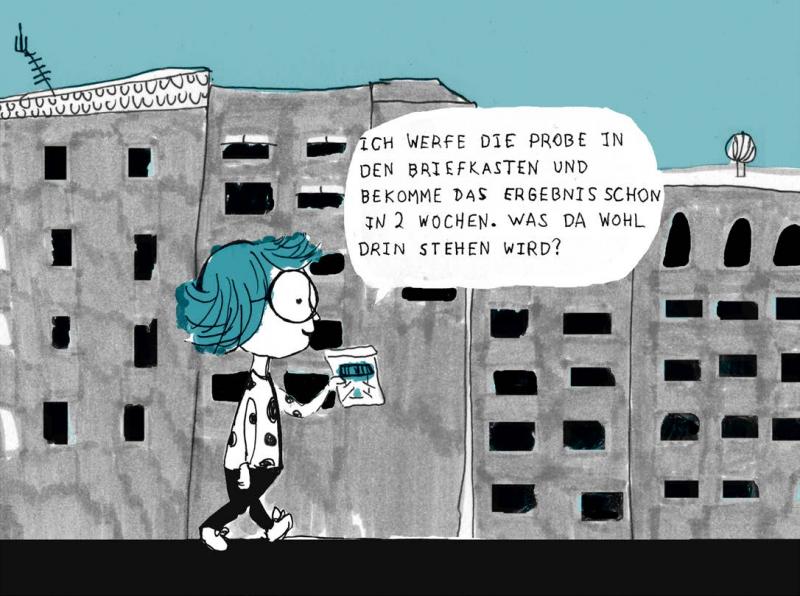
“I throw the probe into the mailbox and get the result back in only two weeks. I wonder what they’ll find out?”
“I throw the probe into the mailbox and get the result back in only two weeks. I wonder what they’ll find out?”
Drawn by Jonathan Hadari , 2014.  This work is licensed under a Creative Commons Attribution-NonCommercial-NoDerivatives 4.0 International License.
This work is licensed under a Creative Commons Attribution-NonCommercial-NoDerivatives 4.0 International License.
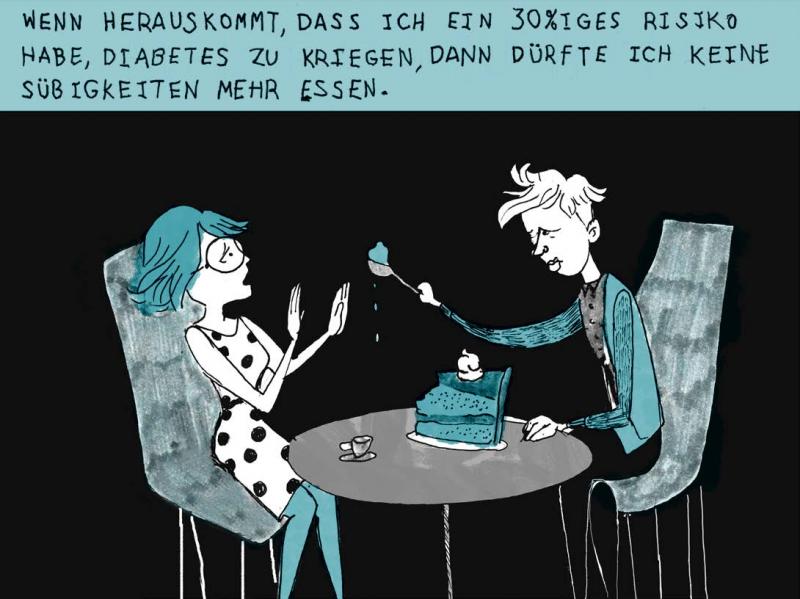
I may find out that I have a 30% risk of getting diabetes. Then I would not be allowed to eat sweets anymore.
I may find out that I have a 30% risk of getting diabetes. Then I would not be allowed to eat sweets anymore.
Drawn by Jonathan Hadari , 2014.  This work is licensed under a Creative Commons Attribution-NonCommercial-NoDerivatives 4.0 International License.
This work is licensed under a Creative Commons Attribution-NonCommercial-NoDerivatives 4.0 International License.

Or there is a 40% probability that I will have cancer. Then I would have to stay in the hospital all the time!
Or there is a 40% probability that I will have cancer. Then I would have to stay in the hospital all the time!
Drawn by Jonathan Hadari , 2014.  This work is licensed under a Creative Commons Attribution-NonCommercial-NoDerivatives 4.0 International License.
This work is licensed under a Creative Commons Attribution-NonCommercial-NoDerivatives 4.0 International License.
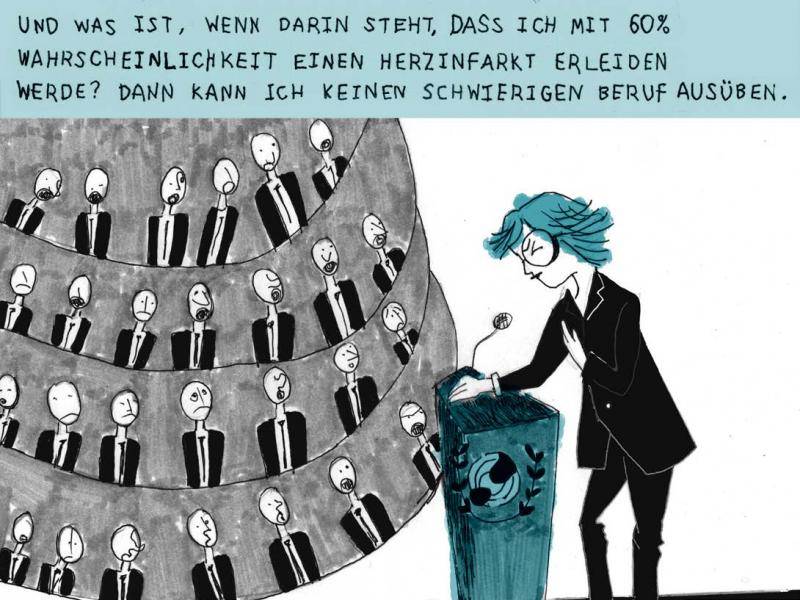
And what if the report says, that there is a 60% chance that I will suffer a heart attack? Then I cannot carry out a challenging profession.
And what if the report says, that there is a 60% chance that I will suffer a heart attack? Then I cannot carry out a challenging profession.
Drawn by Jonathan Hadari , 2014.  This work is licensed under a Creative Commons Attribution-NonCommercial-NoDerivatives 4.0 International License.
This work is licensed under a Creative Commons Attribution-NonCommercial-NoDerivatives 4.0 International License.
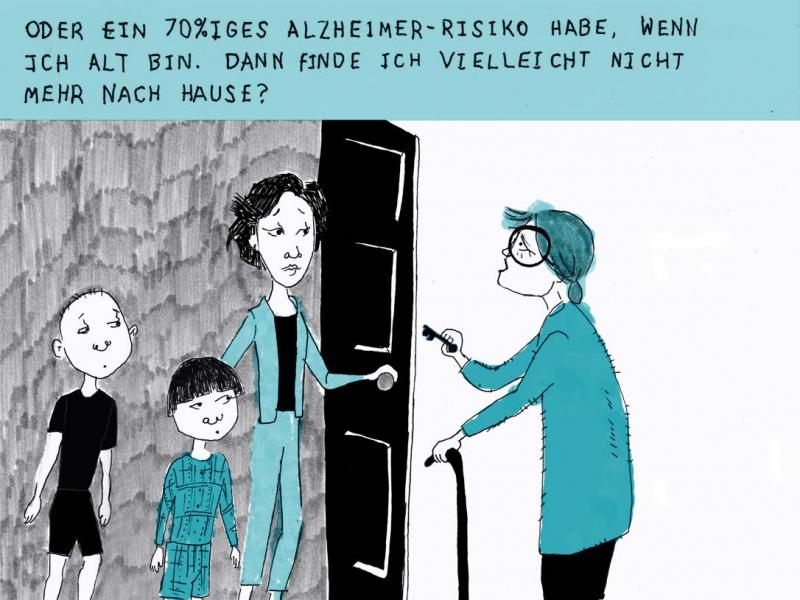
Or that I have the 70% risk of having Alzheimer’s when I get old. Maybe I won’t be able to find my way back home?
Or that I have the 70% risk of having Alzheimer’s when I get old. Maybe I won’t be able to find my way back home?
Drawn by Jonathan Hadari , 2014.  This work is licensed under a Creative Commons Attribution-NonCommercial-NoDerivatives 4.0 International License.
This work is licensed under a Creative Commons Attribution-NonCommercial-NoDerivatives 4.0 International License.
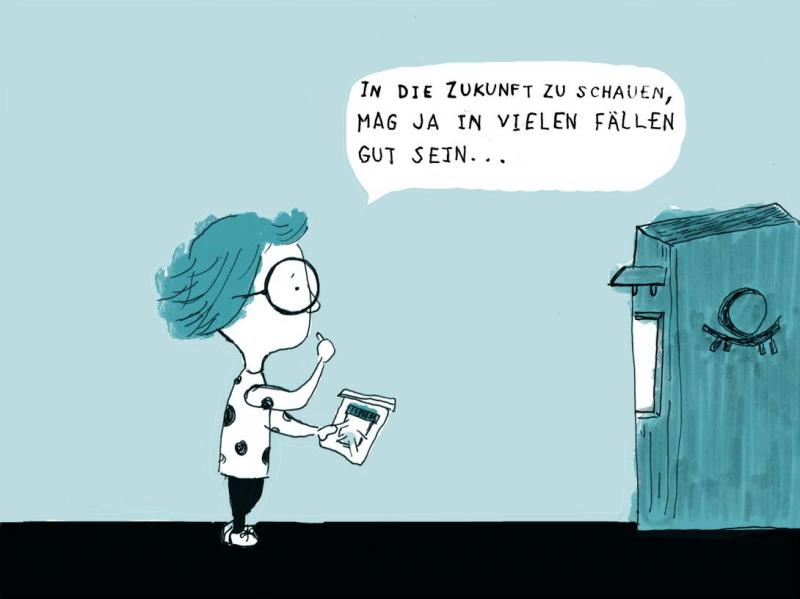
“Being able to look into the future may be good in some cases…”
“Being able to look into the future may be good in some cases…”
Drawn by Jonathan Hadari , 2014.  This work is licensed under a Creative Commons Attribution-NonCommercial-NoDerivatives 4.0 International License.
This work is licensed under a Creative Commons Attribution-NonCommercial-NoDerivatives 4.0 International License.

“But do I really want to know right now?”
“But do I really want to know right now?”
Drawn by Jonathan Hadari, 2014.  This work is licensed under a Creative Commons Attribution-NonCommercial-NoDerivatives 4.0 International License.
This work is licensed under a Creative Commons Attribution-NonCommercial-NoDerivatives 4.0 International License.
Artist’s Comment
Personalized medicine has its advantages. Gene analyses make it possible to individually adapt a treatment to a patient so that it will be more effective and have fewer side effects. But is it really a good idea for a healthy person to know all the possible side effects? Can we prepare for it or will we just become paranoid and afraid? At the least, it is useful to decode a person’s DNA in order to improve a diagnosis and the resulting treatment.
How to cite
Hadari, Jonathan. “My future?: Genetic engineering.” Environment & Society Portal, Multimedia Library, 2014. http://www.environmentandsociety.org/node/6648/.
The comic also appears in Alexandra Hamann, Reinhold Leinfelder, Helmuth Trischler, and Henning Wagenbreth, eds., Anthropozän – 30 Meilensteine auf dem Weg in ein neues Erdzeitalter. Eine Comic-Anthologie (Munich: Deutsches Museum, 2014).
This work is licensed under a Creative Commons Attribution-NonCommercial-NoDerivatives 4.0 International License.


